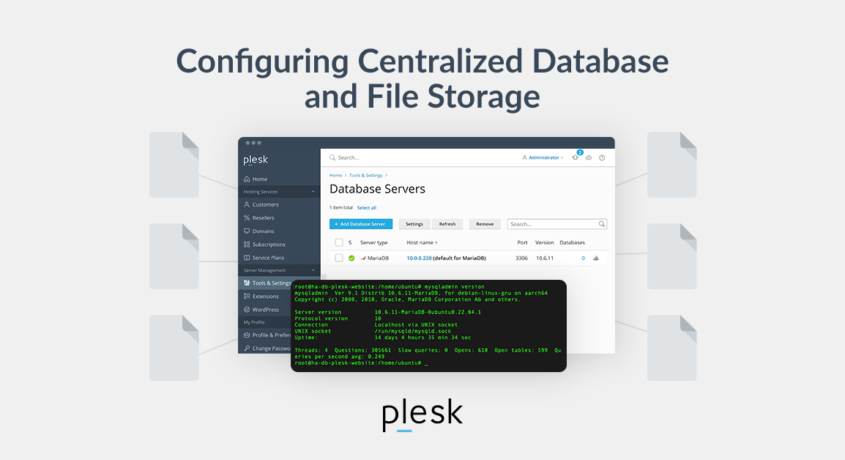Plesk with Centralized Database and Community File System

Many instances we have been requested to implement assist for centralized database (DB) and file storage. Which is comprehensible as a result of these two options open up many handy hosting-building eventualities that have been beforehand unavailable or may very well be created solely at your personal threat. And in addition as a result of the less single factors of failure (SPOF) you might have, the extra resistant you’re to faulting the answer. Nevertheless, because the launch of Plesk Obsidian 18.0.49, utilizing centralized DB (as Beta) and Community File System (NFS) has develop into attainable. Let’s discover out what you are able to do with every of those options.
Please word in case you are solely within the centralized database function, you may go on to the ‘Shared or Centralized Database‘ part. Nevertheless, if you wish to find vhosts recordsdata on NFS, you may skip the details about databases and begin from the ‘Community File System‘ part. There isn’t any requirement to configure these options collectively – every can work as a stand-alone function in order for you.
Shared or Centralized Database
Beforehand, it was a requirement to have a regionally working database as a result of Plesk makes use of it for storing its personal database (referred to as “psa”). Even if you happen to join an exterior database for the shoppers’ web sites, you could have a neighborhood database service for Plesk. Which means that you must preserve that database like set up safety updates, make backups, watch logs, improve disk and different assets to the server if required, and many others. And in case you have a number of Plesk servers, it generates a number of extra work. This imposes one other critical limitation: you may solely use the database that may be put in on the working system you’re utilizing.
However what has modified since Plesk Obsidian 18.0.49? Let’s dive a bit deeper to seek out out just a few new eventualities:
- You should utilize a lot much less databases for a fleet of Plesk servers, it reduces the quantity of upkeep work with the database(s).
- You’ll be able to transfer a database from Plesk to a different server in a non-public community, it is going to improve safety.
- Separating net and database companies permits you to optimize every server for required duties, e.g. including extra reminiscence to database servers and permitting them to make the most of all obtainable reminiscence, with out aggressive use with different companies.
- It permits using MySQL-compatible databases that beforehand was not supported by Plesk as a result of they may not be put in on the identical server along with Plesk. An instance of a attainable resolution is the Galera Cluster for MySQL, which gives a real multi-master and active-active cluster.
- Should you favor a SaaS database from cloud suppliers, you don’t even have to have a server for the database. And upkeep work will be executed by way of the web-interface. Nevertheless, this database have to be appropriate with one of many databases supported by Plesk.
There’s additionally just a few cons:
- Should you use a single database for all Plesk servers, the database turns into a single level of failure for all these Plesk servers.
- A community pace and connectivity between database server and Plesk must be adequate and steady.
New Servers Deployment
Let’s begin. It’s not attainable to transform an current Plesk set up to Plesk with a distant ‘psa’ database; it must be for brand spanking new Plesk installations solely. I made a decision to make use of Oracle Cloud due to ARM servers and their enticing circumstances of free tier for these servers.
First, I create a non-public community (“native”, 10.0.0.0/24) in order that the visitors between Plesk and the database server goes inside this community. To make community setup simpler, I permit all visitors contained in the non-public community. As you may see within the picture beneath, I even have a community with public entry (“web”).
